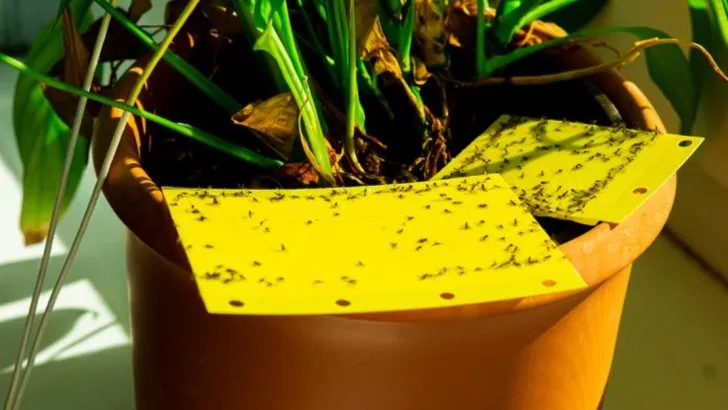Fungus gnats may be small, but they can cause big problems for your seedlings and houseplants by damaging roots and spreading disease. If left unchecked, these pesky insects can stunt plant growth and weaken your indoor garden.
In this article, we share 12 effective ways to stop fungus gnats from ruining your plants. From natural remedies to preventative measures, these tips will help you eliminate gnats and protect your plants. If you’re tired of dealing with these annoying pests, these simple and effective solutions will keep them under control for good!
Adjust Watering Practices
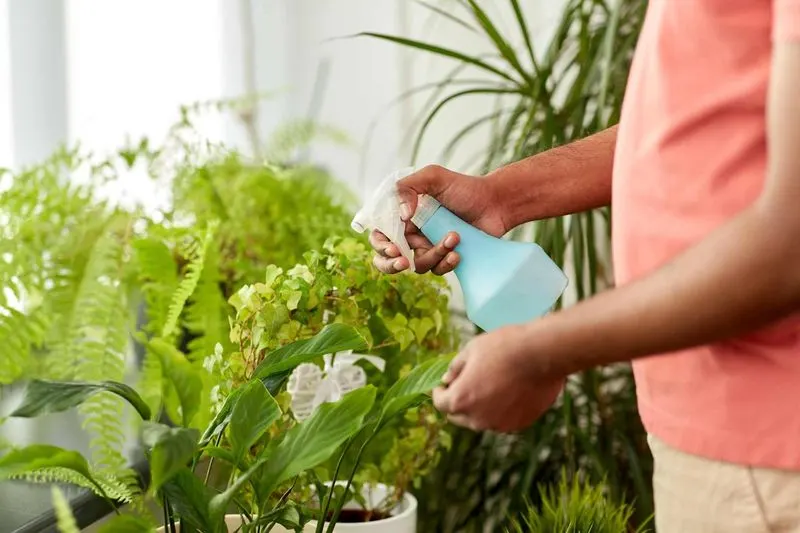
Fungus gnats thrive in moist environments. Ensuring that the top inch of soil dries out between waterings can make a big difference. Overwatering is a common mistake that creates the perfect breeding ground for these pests. By adjusting watering practices, not only is gnat infestation minimized, but plant health is also boosted. It’s crucial to understand the water needs of each plant species. Observing the soil’s moisture before watering can prevent the conditions where gnats flourish. Simple changes can lead to healthier plants and fewer gnats.
Use Yellow Sticky Traps
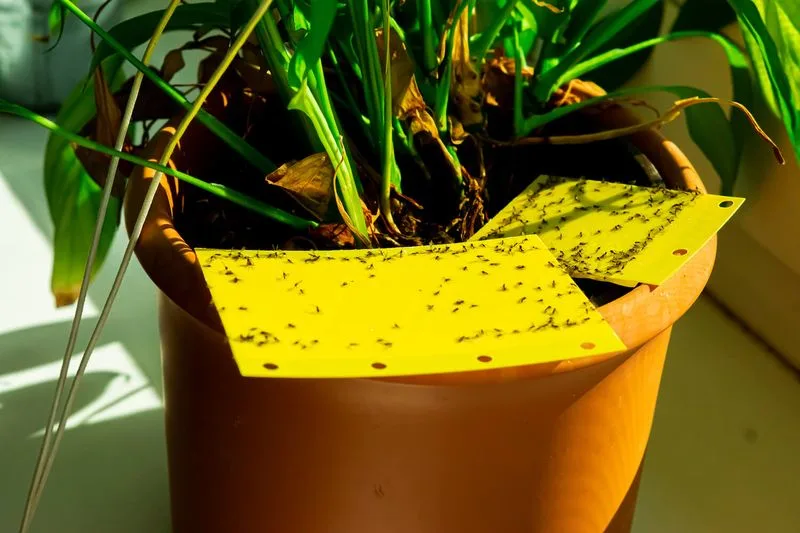
Yellow sticky traps are an effective way to control adult fungus gnats. Placing these traps near infected plants will capture flying adults, reducing the breeding population. The bright yellow color attracts the gnats, making it easy to monitor and control their numbers. Regularly checking and replacing these traps ensures continued effectiveness. While they won’t eliminate the larvae, they provide a visual indication of the infestation level. Keeping adult populations in check is a key step in breaking the life cycle of fungus gnats.
Introduce Beneficial Nematodes
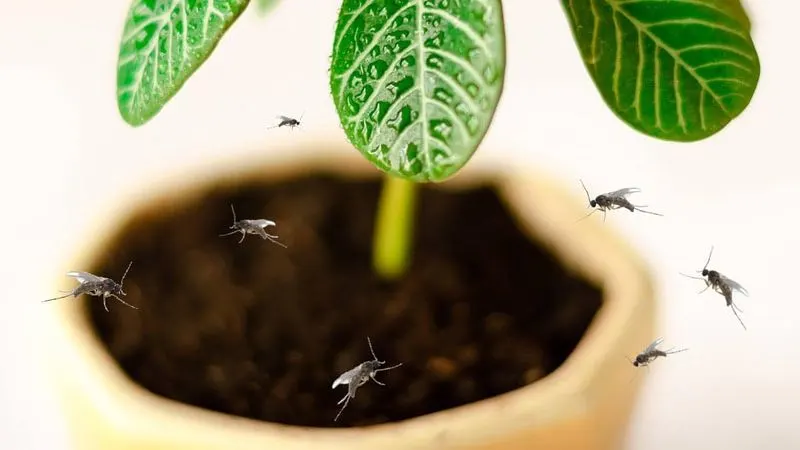
Beneficial nematodes are microscopic worms that target and kill fungus gnat larvae in the soil. These natural predators seek out the larvae, providing an environmentally friendly pest control solution. Simply mix them with water and apply to the soil surface. Their use can significantly reduce the gnat population without harming the plants. This biological approach targets the problem at its source. Regular applications can keep populations low, and they work well in conjunction with other methods. Safe for humans and pets, nematodes are a great natural choice.
Topsoil Replacement
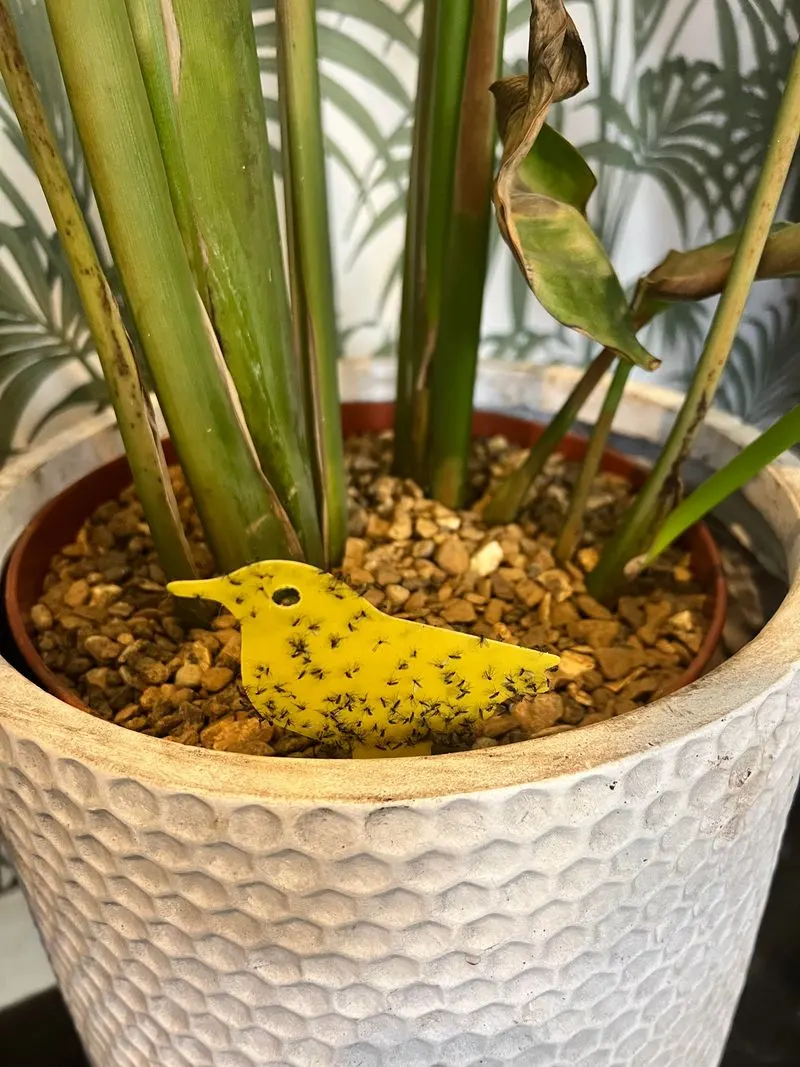
Replacing the top inch of potting soil can be an effective way to eliminate fungus gnats. The larvae thrive in this layer, so removing and replacing it with fresh soil can disrupt their lifecycle. It’s a straightforward approach that doesn’t require chemicals. By keeping the surface dry and clean, new infestations are less likely to occur. This method works particularly well for newly identified infestations. When combined with other preventative measures, it enhances overall effectiveness. Regular monitoring and maintenance can ensure long-term success.
Use Sand as a Top Dressing
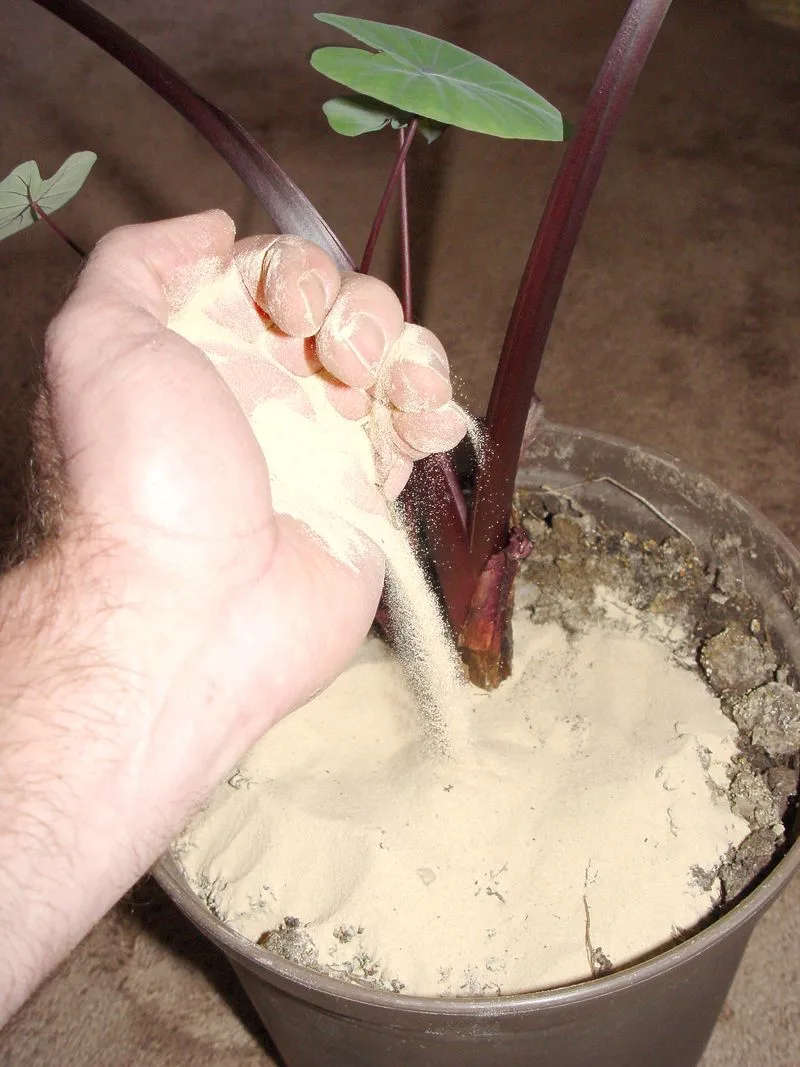
Applying a layer of sand on top of the soil can deter fungus gnats. Sand dries out quickly, creating a less hospitable environment for these pests. The gnats find it difficult to penetrate this barrier to lay their eggs. This method is simple and cost-effective, integrating seamlessly with existing plant care routines. The effectiveness of this method increases when used in combination with other controls. It’s a practical solution for those looking to minimize gnat problems without extensive effort. Sand also adds an aesthetic appeal to plant displays.
Neem Oil Applications

Neem oil serves as a natural pesticide against fungus gnats. When applied to the soil or leaves, it disrupts the growth and reproduction of these pests. This oil is derived from the seeds of the neem tree and is safe to use around pets and children. It’s important to follow the instructions on the label to ensure the best results. Besides gnats, neem oil can combat other plant pests, making it a versatile addition to plant care routines. Regular applications can significantly reduce gnat populations over time.
Hydrogen Peroxide Solution
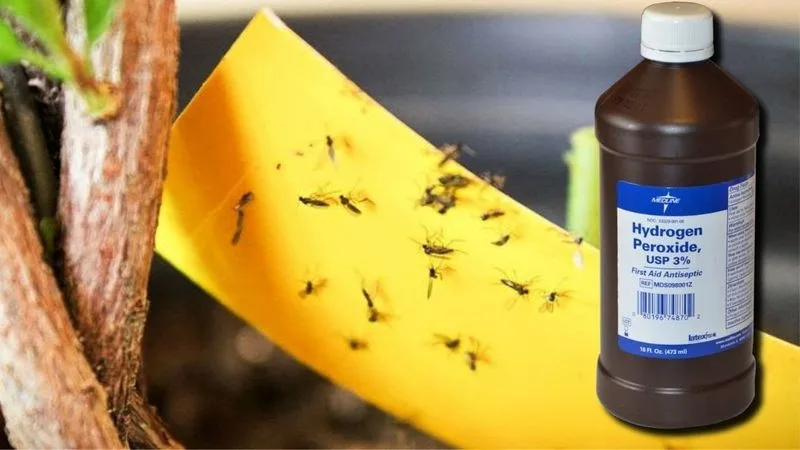
A mixture of hydrogen peroxide and water can be an effective way to kill fungus gnat larvae in the soil. The solution targets the larvae directly, offering a quick method to reduce their numbers. Simply mix one part hydrogen peroxide with four parts water and apply to the soil. It’s safe for plants when used in the correct dilution and can be repeated as needed. The bubbling action will help to aerate the soil as well. This method is both affordable and easy to implement, making it accessible for any gardener.
Cinnamon as a Natural Fungicide
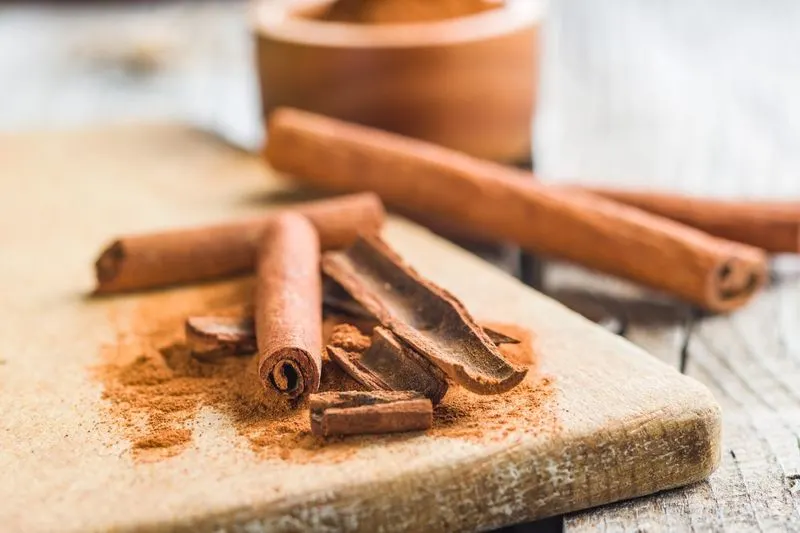
Cinnamon is not only a spice but also a natural fungicide that can help control fungus gnats. Sprinkling ground cinnamon on top of the soil can reduce the fungal growth that gnats feed on. It’s a non-toxic and eco-friendly approach that addresses the root of the problem. Regular application can lead to a noticeable decrease in gnat activity over time. Cinnamon also has antifungal properties that can benefit plant health. This method is easy to apply, cost-effective, and pleasant-smelling, offering a dual benefit for the home environment.
Use a Fan to Increase Air Circulation
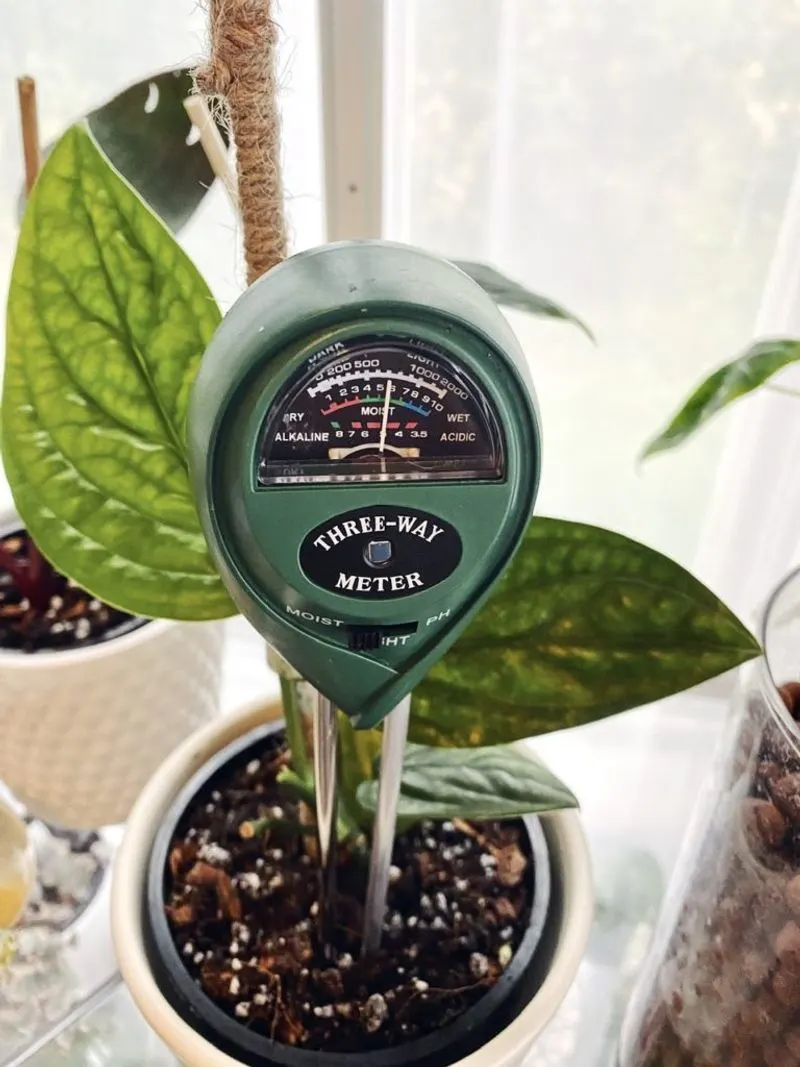
Increasing air circulation around plants can discourage fungus gnats from settling. Using a small fan to create airflow helps dry out the soil surface, making it less appealing for egg-laying. This simple addition can significantly impact gnat problems. Improved air circulation also benefits plant health by preventing mold and mildew. It’s a practical solution that enhances the living environment for both plants and people. By keeping the air moving, gnats find it harder to thrive, reducing their presence over time.
Diatomaceous Earth Application
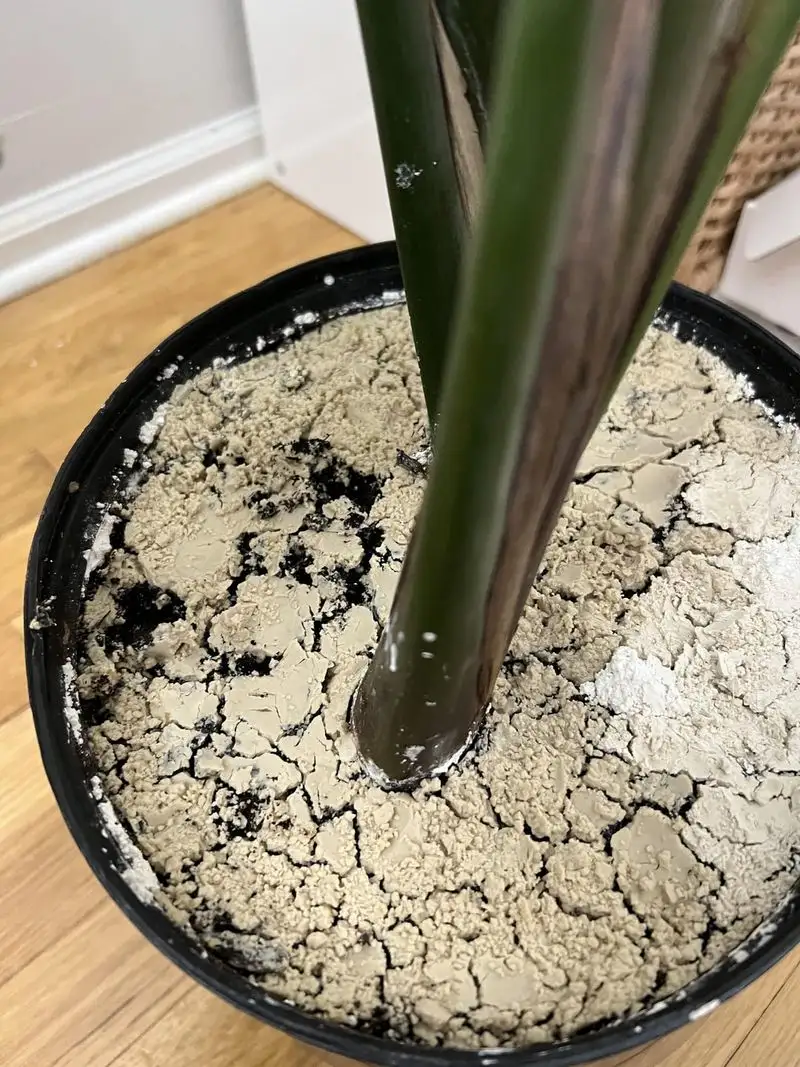
Diatomaceous earth is a natural powder that can help control fungus gnats. When applied to the soil surface, it dehydrates and kills the larvae. This non-toxic method is safe for use around humans and animals. It’s essential to reapply after watering to maintain its effectiveness. The fine powder creates a barrier that gnats struggle to cross. Its use can significantly reduce the larval population when combined with other strategies. Diatomaceous earth is a useful component in an integrated pest management approach, offering sustainable, chemical-free control.
Insecticidal Soap Spray
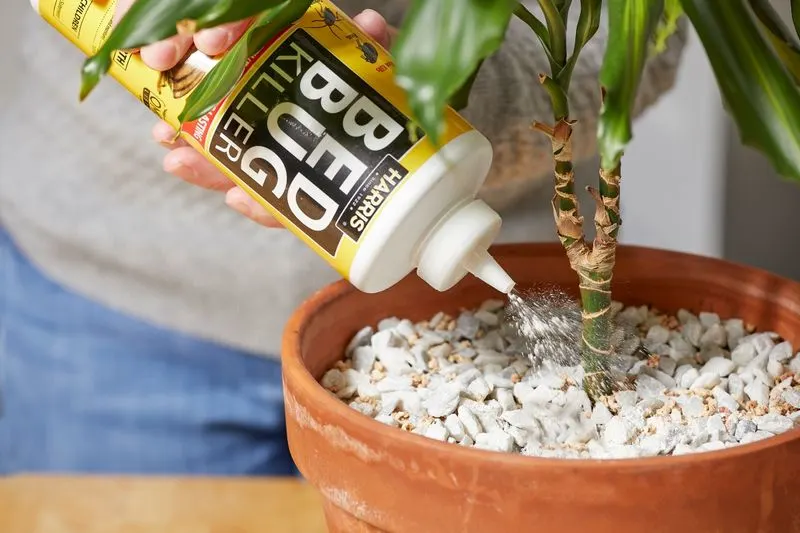
Insecticidal soap spray can be used to target adult fungus gnats. This approach focuses on reducing their numbers by directly affecting their ability to reproduce. It’s non-toxic to plants and pets, making it a safe option for indoor use. Regular spraying can maintain control over the adult population. While it doesn’t affect larvae, it complements other methods that target them. The soap works by breaking down the protective outer layer of the gnats, leading to dehydration. As part of a comprehensive gnat management plan, it’s an excellent tool to have.
Quarantine New Plants
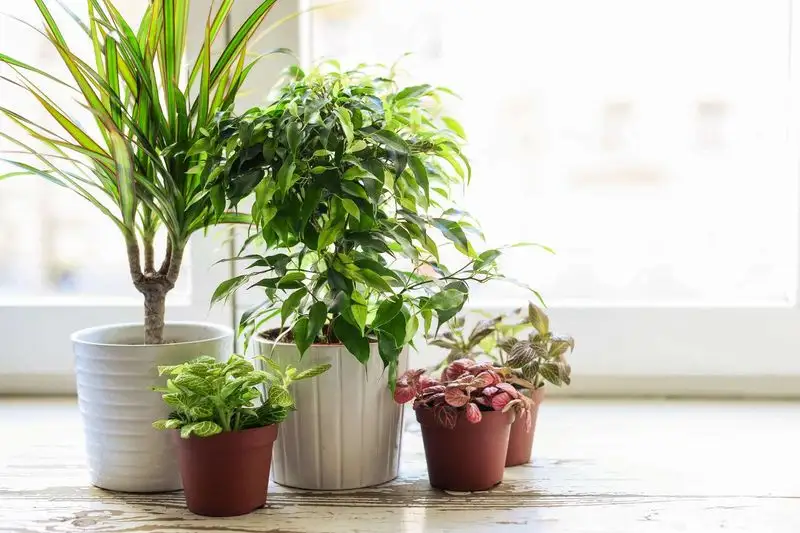
Quarantining new plants before introducing them to your collection can prevent fungus gnat infestations. This precautionary step allows time to monitor for pests. Inspecting and treating new arrivals minimizes the chance of spreading gnats to healthy plants. It’s a simple, proactive approach that can save time and effort in the long run. Careful observation and treatment of new plants ensure a pest-free environment. This practice, combined with other preventative measures, can keep your indoor garden healthy and thriving. The time spent quarantining is well worth the peace of mind it brings.

